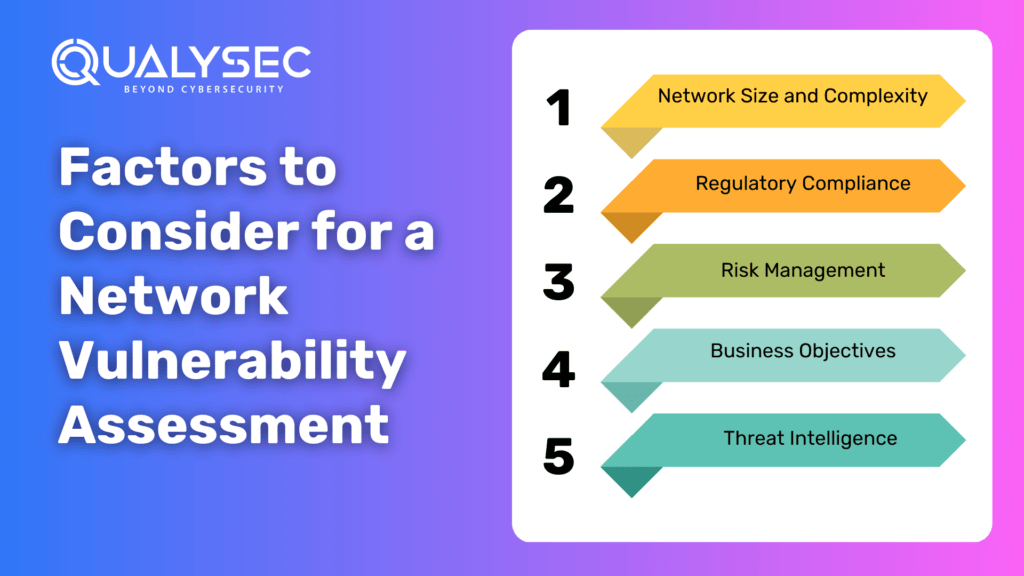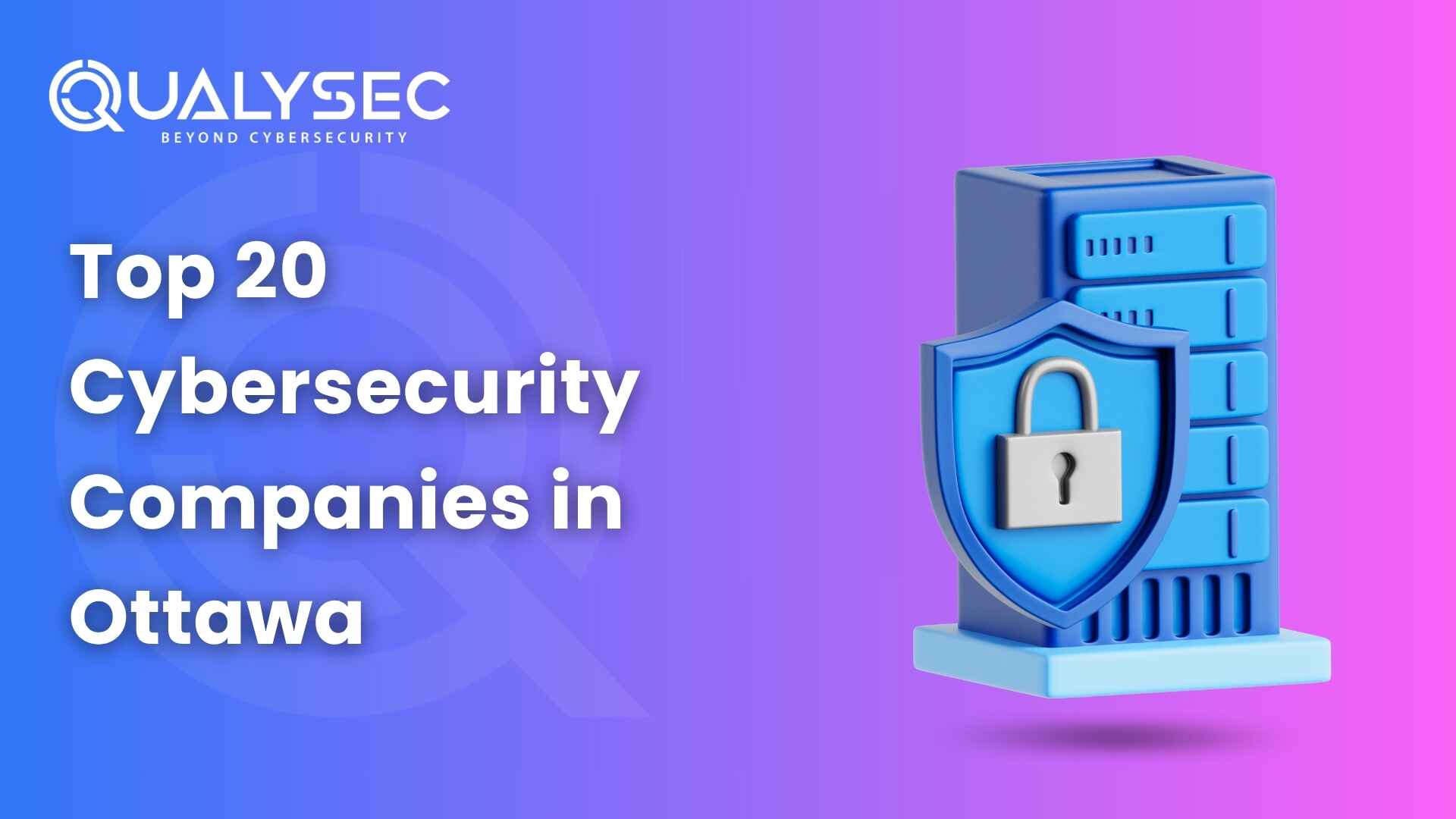As organizations continue to grow and expand their digital footprint, network security has become a top priority. External Network Vulnerability Assessment can avoid the exposure of critical information, such as customer data, intellectual property, and confidential company information, to cyber criminals. Network vulnerabilities can also result in data breaches, financial losses, and reputational damage.
Therefore, conducting regular network vulnerability assessments is necessary to identify, prioritize, and mitigate security risks. In this blog, we will explore the factors to consider, the importance of network vulnerability assessments, common vulnerabilities, best practices, steps, and tools for network vulnerability assessments.
Factors to Consider for a Network Vulnerability Assessment
Before conducting a network vulnerability assessment, several factors must be considered. These factors include:

- Network Size and Complexity: The size and complexity of your network determine the amount of time, resources, and tools required for the assessment.
- Regulatory Compliance: Regulatory requirements, such as HIPAA, PCI DSS, and GDPR, mandate that organizations protect sensitive information. Network vulnerability assessments can help ensure compliance.
- Risk Management: Conducting a vulnerability assessment helps identify and prioritize risks. This information can then be used to develop a risk management plan.
- Business Objectives: Conducting a vulnerability assessment helps align security initiatives with business objectives.
- Threat Intelligence: Understanding the latest cyber threats can help identify vulnerabilities and protect against attacks.
Why is Network Vulnerability Assessment Necessary?
Undertaking a vulnerability assessment enables organizations to proactively identify system weaknesses and rectify them before attackers can exploit them.
The assessment provides a comprehensive report on the identified vulnerabilities, including prioritizing remediation efforts. Additionally, various compliance standards like PCI-DSS, HIPAA, SOX, ISO, etc., mandate organizations to conduct regular network vulnerability assessments to ensure compliance with security requirements.
Most Common Network Vulnerabilities
- Unpatched software and operating systems are a common cause of network vulnerabilities
- Weak passwords are another major cause of network vulnerabilities
- Open ports and services are critical elements to consider when securing a network
- Insecure wireless networks are a common type of vulnerability that hackers can exploit
- Lack of encryption is also a common vulnerability that can leave data open to interception by hackers
Ways to Prevent Network Compromise
Here are eight best practices to prevent network compromise or data breach:
- Regular Patching: Regular patching ensures that software vulnerabilities are addressed.
- Strong Passwords: Strong passwords can prevent attackers from gaining access to sensitive information.
- Employee Training: Employee training can help identify and prevent phishing attacks.
- Network Segmentation: Network segmentation limits access to sensitive information.
- Two-Factor Authentication: Two-factor authentication provides an additional layer of security.
- Access Control: Access control ensures that only authorized individuals have access to sensitive information.
- Encryption: Encryption protects sensitive information from being intercepted by attackers.
- Regular Backups: Regular backups ensure that data can be recovered in case of a data breach.
Steps to Conduct Network Vulnerability Assessment
Now that we’ve discussed some of the most common network vulnerabilities and best practices to prevent them, let’s take a look at the steps involved in conducting a network vulnerability assessment.
Network vulnerability assessments are necessary for several reasons:
- Identify Vulnerabilities: Network vulnerability assessments help identify vulnerabilities before they can be exploited.
- Compliance: Network vulnerability assessments can help organizations meet regulatory compliance requirements.
- Risk Management: Network vulnerability assessments help prioritize security risks and develop a risk management plan.
- Cost-Effective: Network vulnerability assessments are cost-effective compared to the cost of a data breach.
Network Vulnerability Assessment Tools
There are many different open-source and commercial tools available for conducting a network vulnerability assessment. Some of the most popular open-source tools include:
- OpenVAS – an open-source vulnerability scanner that can detect thousands of vulnerabilities across multiple operating systems and applications.
- Nmap – a network exploration and security auditing tool that can be used to identify hosts and services on a network.
- Nikto – a web server scanner that can identify vulnerabilities in web applications and servers.
- Wireshark – a network protocol analyzer that can be used to capture and analyze network traffic.
These are just some of the many different tools available for conducting a network vulnerability assessment. By using these tools, organizations can identify any potential weaknesses in their network and take steps to remediate them.
Qualysec, the Vulnerability Assessment Provider
Qualysec is a leading provider of cloud-based vulnerability and compliance management solutions. Their platform allows companies to conduct continuous monitoring, vulnerability assessment, and compliance management across their entire IT infrastructure.
Qualysec follows a comprehensive methodology that involves a combination of manual and automated testing techniques to ensure maximum coverage of vulnerabilities. They also provide detailed reports that include a prioritized list of vulnerabilities, along with recommendations for remediation.
They work closely with organizations to understand their unique needs.
Qualysec offers various services which include:
- Web App Pentesting
- Mobile App Pentesting
- API Pentesting
- Cloud Security Pentesting
- IoT Device Pentesting
- AI /ML Pen-testing
The methodologies offered by Qualysec are particularly beneficial for businesses that must adhere to industry rules or prove their dedication to security to clients and partners. So, by opting for Qualysec as an External Network Vulnerability Assessment service provider, businesses can ensure the safety of their web applications.
Hence, choose Qualysec for a comprehensive and reliable external network vulnerability and assessment. Also, their penetration testing guide will help you make informed decisions and understand the various factors that impact the cost. Hence, protect your assets and enhance your security posture by choosing us.
Conclusion
Regular external network vulnerability assessments are necessary to identify potential vulnerabilities in a company’s network infrastructure. By following best practices and conducting regular assessments, companies can proactively address vulnerabilities and comply with industry regulations. Some of the top free tools for network vulnerability assessment include OpenVAS, Nmap, Nikto, and Wireshark. We are always ready to help, talk to our Experts and fill out your requirements.
It is always best to perform a comprehensive vulnerability assessment and penetration testing (VAPT) for your network before or after pushing it into production in order to identify the direct threats to your external network and ultimately to your business. Additionally, doing the VAPT scans for your external network on a regular basis is a best practice to protect it from emerging cyber threats and possible zero-day exploits and data breaches.
Frequently Asked Questions
Q: What is an external network vulnerability assessment?
A: An external network vulnerability assessment is the process of identifying security weaknesses in an organization’s network infrastructure that are accessible from the internet.
Q: Why should an organization conduct an external network vulnerability assessment?
A: An external network vulnerability assessment helps an organization identify vulnerabilities that an attacker could exploit to gain unauthorized access to its network.
Q: How is an external network vulnerability assessment conducted?
A: An external network vulnerability assessment typically involves using automated tools to scan an organization’s network for known vulnerabilities, as well as conducting manual tests to identify any vulnerabilities that automated tools may have missed.
Q: Who typically conducts an external network vulnerability assessment?
A: External network vulnerability assessments are typically conducted by external security consultants or managed security service providers (MSSPs) who specialize in this type of work.
Q: How often should an organization conduct an external network vulnerability assessment?
A: The frequency of external network vulnerability assessments depends on a number of factors, such as the size and complexity of the organization’s network infrastructure, the level of risk associated with its business operations, and any regulatory or compliance requirements.
































































































































































































































































































































































































































































































































0 Comments